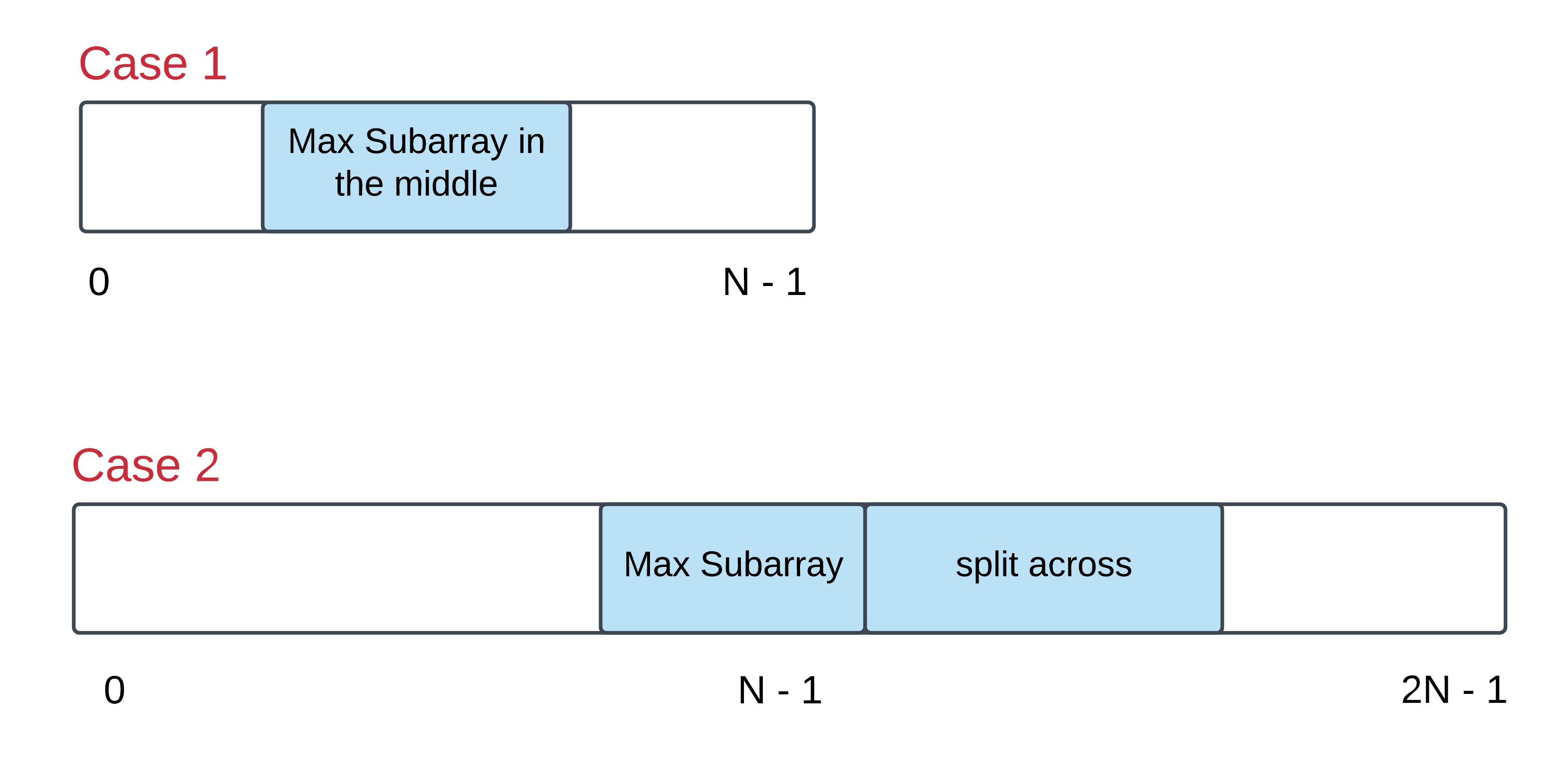1546. Maximum Number of Non-Overlapping Subarrays With Sum Equals Target
Given an array nums and an integer target.
Return the maximum number of non-empty non-overlapping subarrays such that the sum of values in each subarray is equal to target.
Example 1:
Input: nums = [1,1,1,1,1], target = 2
Output: 2
Explanation: There are 2 non-overlapping subarrays [1,1,1,1,1] with sum equals to target(2).
Example 2:
Input: nums = [-1,3,5,1,4,2,-9], target = 6
Output: 2
Explanation: There are 3 subarrays with sum equal to 6.
([5,1], [4,2], [3,5,1,4,2,-9]) but only the first 2 are non-overlapping.
Example 3:
Input: nums = [-2,6,6,3,5,4,1,2,8], target = 10
Output: 3
Example 4:
Input: nums = [0,0,0], target = 0
Output: 3
Constraints:
1 <= nums.length <= 10^5-10^4 <= nums[i] <= 10^40 <= target <= 10^6
给定一个数组,问数组中最多有多少个不overlap的子数组,它们的和等于target。
常规DP方法,假设dp[i]表示[0,…,i]能找到的最多的子串数目,则对于nums[i+1],如果从i+1往前,求累加和,如果累加到j的地方,累加和[j,…,i]等于target,则dp[i+1]=dp[j-1]+1。
这种思路的代码如下,需要注意for循环需要满足dp[j]==dp[i],如果dp[j]<dp[i],说明j已经回退到上一个累加和等于target的区间,已经有overlap了,需要终止。
class Solution {
public:
int maxNonOverlapping(vector<int>& nums, int target) {
int n = nums.size();
vector<int> dp(n + 1, 0);
for(int i = 1; i <= n; ++i) {
dp[i] = dp[i - 1];
int sum = 0;
for(int j = i; j > 0 && dp[j] == dp[i]; --j) {
sum += nums[j - 1];
if(sum == target) dp[i] = max(dp[i], dp[j - 1] + 1);
}
}
return dp[n];
}
};
上述代码的时间复杂度为O(n^2),在最后几个大数据集上TLE。
参考评论区,用一个hash记录某个前缀和出现的最新下标,对于任意一个数nums[i],看看prefix_sum-target是否在之前记录的前缀和中(查hash即可),如果在,假设对应下标为j,则说明[j,…,i]之间的累加和等于target,找到一个。不过为了保证不overlap,需要保证下标j不能回退到上一个合法的累加和区间内,每次找到一个合法区间后,用right_most记录其右边界,下次只需要用j和right_most比较大小即可。
完整代码如下:
class Solution {
public:
int maxNonOverlapping(vector<int>& nums, int target) {
int n = nums.size();
unordered_map<int, int> hash;
hash[0] = -1;
int prefix_sum = 0, right_most = -1;
int ans = 0;
for(int i = 0; i < n; ++i) {
prefix_sum += nums[i];
int supplement = prefix_sum - target;
if(hash.find(supplement) != hash.end()) {
int left = hash[supplement];
if(left >= right_most) {
++ans;
right_most = i;
}
}
hash[prefix_sum] = i;
}
return ans;
}
};
本代码提交AC,用时392MS。

